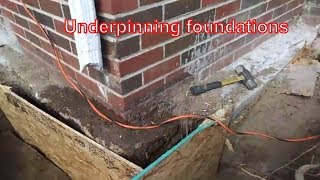Slab foundations are flat pieces of concrete that support your home. They’re often employed in colder climates for homes heated with natural gas or propane and feature frost protection technology such as sheets of rigid polystyrene insulation to keep the ground from freezing around footings.
Water and gas lines encased in concrete are difficult to access for repairs or upgrades, increasing their susceptibility to moisture damage.
Cost
Underpinning Melbourne Slab foundations tend to cost less to construct, making them ideal for warm climates where freezing ground conditions are less likely to damage concrete slabs. A monolithic slab consists of one piece of concrete poured all at once; some versions even feature post tension cables or reinforced with rebar for additional strength and stability.
Homes built on slab foundations are closer to or level with the ground, which can lower energy costs by eliminating steps for entry into the house. Furthermore, these homes provide greater accessibility for elderly and disabled individuals as they don’t require crawl spaces or basements to reach the front door.
One drawback of slab foundations is their susceptibility to cracking due to lack of support beneath. Therefore, it is crucial that prior to building one on concrete slab foundations you obtain both a soil study and environmental evaluation by experienced professionals who can accurately determine your ground’s load-bearing capacity.
Durability
Since slab foundations are constructed directly onto the ground, they require less maintenance than crawl space or basement-based foundations. Furthermore, they are less susceptible to moisture damage and radon gas leakage, though not immune from other issues such as earthquakes or freezing soil.
If a slab-on-grade foundation is built in an environment prone to frost, its concrete may crack under these conditions. To mitigate frost heave and maintain structural integrity of stem wall slabs, frost footings or walls must first be installed, followed by placing the slab.
One downside of slab houses is their difficulty to inspect. This makes it more challenging to detect cracks in the concrete that might signal that its foundation is unsupported and could eventually fail; additionally, accessing plumbing or electrical lines within such homes may prove more expensive and harder than necessary for repair or upgrades.
Accessibility
Slab foundations differ from other foundation types in that they only require minimal site preparation and can often be completed in just one day, saving both time and money, especially in warmer climates. Slabs also allow houses to be built closer to the ground which makes access easier for people with limited mobility.
One drawback of a slab foundation is its requirement of embedding water and gas pipes within concrete, making them hard to access in case of an emergency. Furthermore, due to no open space beneath your home there will be higher heating and cooling bills than with other foundation types like crawl spaces or basements.
Cracked slab foundations may become susceptible to cracking due to improper soil drainage or freezing temperatures, leading to costly repairs and damaging effects on a house’s structure. Furthermore, shifting ground from tree roots or earthquakes may wreak havoc with it and lead to even more cracking issues for slab foundations.
Maintenance
A slab foundation may be less expensive to construct, but its maintenance can be more expensive than other foundation types. Cracked surfaces are common and repairs may become complex and costly if cracks have spread further. Tree roots, earthquakes and shifting soil are also potential dangers that could harm an exposed concrete slab foundation.
Plumbing built into a slab foundation poses unique problems when leaks develop. Accessing pipes for repair without resorting to costly jackhammering operations may make matters worse and cost even more money, while since a crawl space isn’t provided with this foundation type, HVAC ducts must run through walls or the attic instead.
Slabs should feature an incline that slopes away from the house to prevent rainwater from washing out soil beneath their foundation, and should maintain an even moisture level to minimize expansion and contraction. A professional sprinkler system can assist in keeping soil moist.

